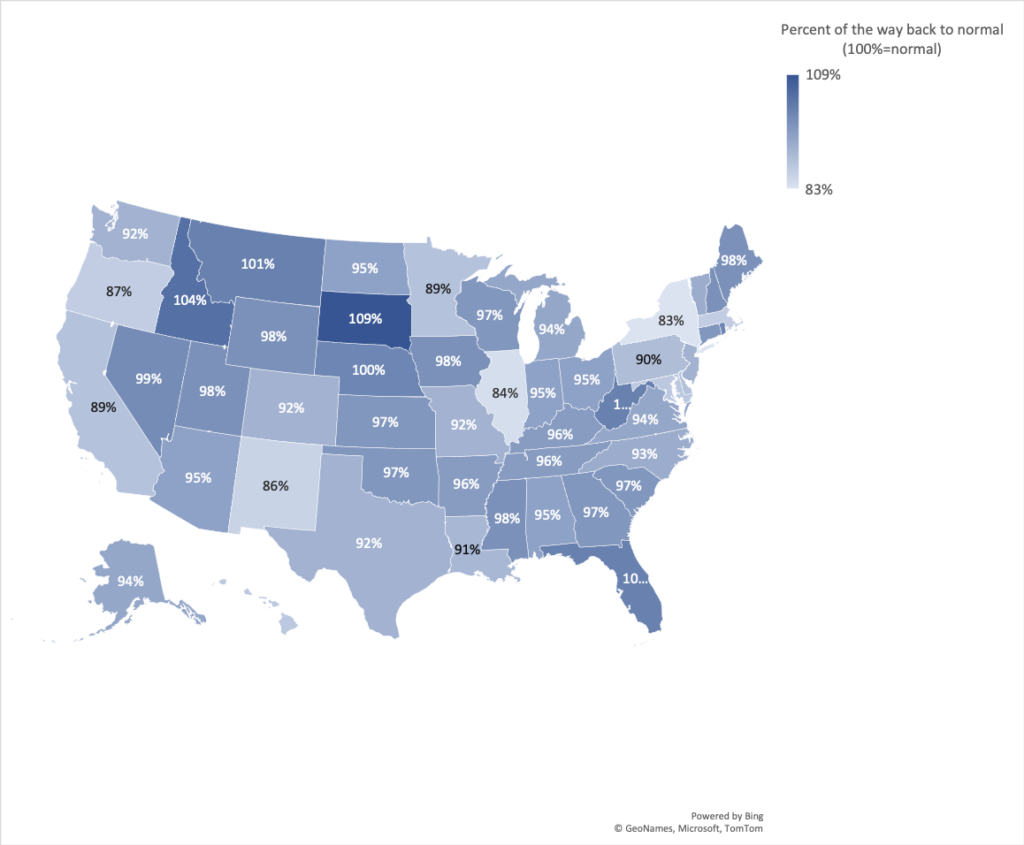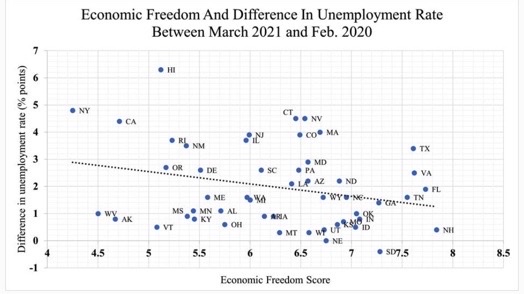Minnesota’s economic recovery is lagging behind 41 states
As new data from the Minnesota Department of Economic Development show, Minnesota’s employment situation is improving. In May, our unemployment rate was down to 4.0 percent from 4.1 in April. In addition, our labor force participation rate was also slightly up.
However, compared to other states, Minnesota is lagging behind in recovery. According to The-Back-to-Normal index, Minnesota ranked 42nd among the states on its rate of returning back to pre-pandemic economic activity levels. Minnesota is currently only at 89 percent of its pre-pandemic level of economic activity. Nationally, the economic activity level is 93 percent of what it was before the pandemic.
On the other hand, other states like South Dakota, Florida, Rhode Island, Montana, Idaho, Nebraska, West Virginia and Florida have managed to achieve at least 100 percent of pre-pandemic economic activity.

It is not surprising that Minnesota is lagging, especially considering how restrictive our state’s lockdown policies have been during the pandemic. But this slow recovery may also point to a bigger issue with economic policy in the state.
Existing burdensome policies like high taxes and restrictive regulation could also be a contributing factor to Minnesota’s slow recovery. High taxes and tight regulations deter entrepreneurship, which is one of the main important components of economic recovery. Additionally, restrictive economic policies may hinder businesses from responding to changing market conditions in order to make the necessary investments and innovate as they plan for a changing market.
In essence, economic freedom builds resilient economies, which are able to withstand downturns and recover quickly. Policies limiting economic freedom, on the other hand, build a less dynamic economy –– i.e., one characterized by, among other things, low business creation, low labor market turnover and low geographic mobility –– which translates to a slow recovery in times of economic crisis.
Indeed, there appears to be a correlation between the level of economic freedom and the change in unemployment during the lockdown. As of March 2021, states that rank low (high) on the Economic Freedom of North America Index had unemployment levels that were further (closer) to their pre-pandemic levels meaning a slow (quick) recovery in the job market.
